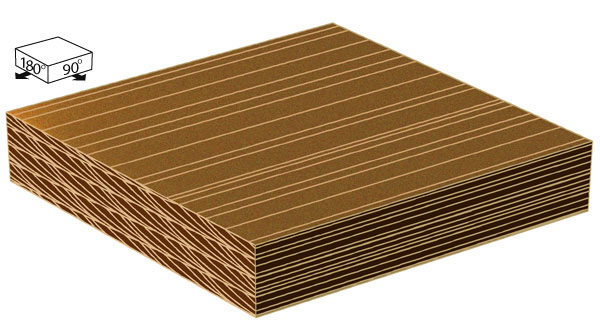Pacific Coastal and Marine Science Center
Bedform Sedimentology Site: “Bedforms and Cross-Bedding in Animation”


FIG. 22b. Structures formed by bedforms that fluctuate in migration speed and asymmetry. The depositional situation in Fig. 22a illustrates a more extreme fluctuation in asymmetry occurring in a shorter interval of time than the situation illustrated in Fig. 22b.
RECOGNITION: Bedforms that fluctuate in migration speed and asymmetry deposit a wide variety of structures. The variety arises because of the many parameters that describe the fluctuations: the extent to which asymmetry varies, the extent to which the migration speed varies (relative to the mean migration speed), and the period of fluctuations in migration speed and asymmetry. Some of the resulting structures, like that shown in (A), are quite distinctive and have not been duplicated by other computer simulations. For example, (A) contains basal wedges that accumulate when bedforms are in a relatively symmetric phase; the basal wedges are then buried by foresets when lee slopes steepen during times of increasing asymmetry. This feature was not generated in other computer simulations, and, moreover, is difficult to explain by other physical processes. Not all structures produced by bedforms fluctuating in asymmetry and migration speed are so easily identifiable. For example, the scalloped cross-bedding in (B) closely resembles the scalloped cross-bedding produced by bedforms fluctuating in height shown in Figure 16, and to a lesser degree resembles cross-bedding formed by superimposed bedforms migrating down the lee slopes of other bedforms (FIG. 25). Plots of the poles of cross-beds in these structures are useful for identifying the bedding as variable two-dimensional cross- bedding, but the structures are so similar to others that the specific depositional processes cannot be determined from the cross-bed dip patterns.
ORIGIN: Fluctuations in bedform asymmetry and migration speed are common in reversing flows. The structures shown here and their three-dimensional counterparts could be expected to be common in oscillatory flows such as wave-generated flows, tidal flows (FIG. 47B), and seasonally reversing eolian flows (Figs. 23 and 24).